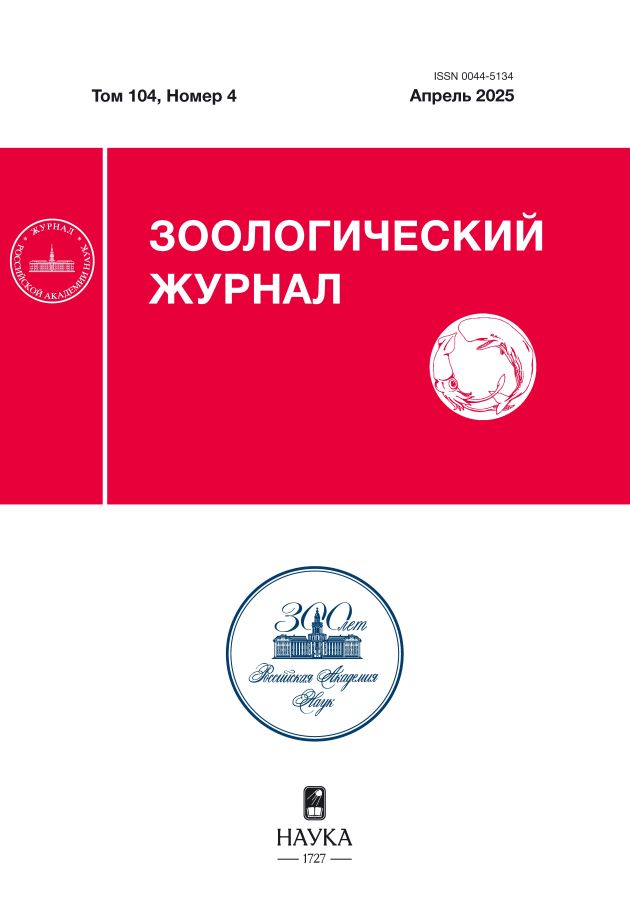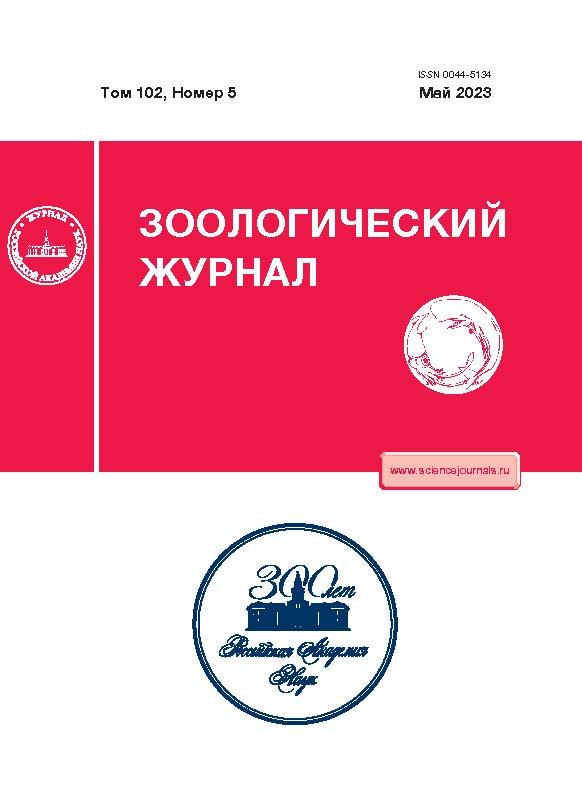Деструкция колоний кайр в южной части Баренцева моря и определяющие ее факторы
- Авторы: Краснов Ю.В.1, Ежов А.В.1
-
Учреждения:
- Мурманский морской биологический институт РАН
- Выпуск: Том 102, № 5 (2023)
- Страницы: 572-580
- Раздел: Статьи
- URL: https://freezetech.ru/0044-5134/article/view/654156
- DOI: https://doi.org/10.31857/S0044513423050070
- EDN: https://elibrary.ru/RKBSUJ
- ID: 654156
Цитировать
Полный текст
Аннотация
На основе данных многолетнего мониторинга тонкоклювых (Uria aalge) и толстоклювых (U. lomvia) кайр на островах и побережьях Мурмана (южная часть Баренцева моря) продемонстрированы особенности динамики численности обоих видов. Показано, что, начиная с 2000-х гг., численность кайр в колониях последовательно снижалась. В период 2019–2021 гг. выявлено исчезновение большинства колоний кайр региона. Установлено, что в последние десятилетия на динамику мурманских популяций кайр в пределах их зимне-весеннего ареала опосредованно, через изменения доступности основных пищевых ресурсов, влияют два фактора – характер рыболовного промысла и изменение океанографических условий. Первый воздействует на птиц исключительно в пределах юго-западной части Баренцева моря. Действие второго охватывает все пространство зимне-весеннего ареала от Баренцева моря до западных районов Северной Атлантики и трансформирует условия обитания кайр в наиболее критические периоды их жизни. Допускается, что в будущем совместное воздействие этих двух факторов может привести к существенным изменениям локализации колоний кайр в южной части Баренцева моря.
Ключевые слова
Об авторах
Ю. В. Краснов
Мурманский морской биологический институт РАН
Автор, ответственный за переписку.
Email: kharlov51@mail.ru
Россия, 183010, Мурманск
А. В. Ежов
Мурманский морской биологический институт РАН
Автор, ответственный за переписку.
Email: mr.haliaeetus51@mail.ru
Россия, 183010, Мурманск
Список литературы
- Белопольский Л.О., 1957. Экология морских колониальных птиц Баренцева моря. М.– Л.: Изд-во АН СССР. 460 с.
- Герасимова Т.Д., 1962. Состояние птичьих базаров мурманского побережья // Орнитология. Вып. 4. С. 11–14.
- Жичкин А.П., 2011. Динамика климатических колебаний и миграции промысловых скоплений рыб в Баренцевом море // Глобальные климатические процессы и их влияние на экосистемы арктических и субарктических регионов: Тез. докл. Междунар. науч. конф. 9–11 ноября 2011 г. Мурманск, ММБИ КНЦ РАН. Апатиты: КНЦ РАН. С. 63–65.
- Кафтановский Ю.М., 1951. Чистиковые птицы Восточной Атлантики. Материалы к познанию фауны и флоры СССР. Изд-во Московского общества испытателей природы. Т. 28. 170 с.
- Краснов Ю.В., Барретт Р.Т., 2000. Мониторинг морских птиц в Баренцевом море. Программное предложение // Русский орнитологический журнал. Экспресс-выпуск. № 113. С. 3–22.
- Краснов Ю.В., Ежов А.В., 2013. Современное состояние популяций моевок (Rissa tridactyla) и кайр (Uria aalge и U. lomvia) на Мурмане // Птицы северных и южных морей России: фауна, экология. Мурман. мор. биол. ин-т КНЦ РАН. Апатиты: изд-во КНЦ РАН. С. 102–117.
- Краснов Ю.В., Ежов А.В., 2020. Состояние популяций морских птиц и факторы, определяющие их развитие в Баренцевом море // Труды Кольского научного центра РАН, № 4/2020 (11). Океанология. Вып. 7. С. 225–244.
- Краснов Ю.В., Матишов Г.Г., Галактионов К.В., Савинова Т.Н., 1995. Морские колониальные птицы Мурмана. Санкт-Петербург: Изд-во Наука. 226 с.
- Краснов Ю.В., Николаева Н.Г., 2016. Тонкоклювая кайра Uria aalge // Миграции птиц Северо-Запада России. Неворобьиные. Под ред. Г.А. Носкова, Т.А. Рымкевич, А.Р. Гагинской. СПб.: Изд-во АНО ЛА “Профессионал”. С. 510–512.
- Краснов Ю.В., Николаева Н.Г., 2016а. Толстоклювая кайра Uria lomvia // Миграции птиц Северо-Запада России. Неворобьиные. Под ред. Г.А. Носкова, Т.А. Рымкевич, А.Р. Гагинской. СПб.: Изд-во АНО ЛА “Профессионал”. С. 513–515.
- Состояние сырьевых биологических ресурсов Баренцева моря и Северной Атлантики в 2017 г., 2017. Ред. Е.А. Шамрай. Мурманск: Изд. ПИНРО. 117 с.
- Состояние сырьевых биологических ресурсов Баренцева и Белого морей и Северной Атлантики в 2020 г., 2020. Александров Д.И. Амелькин А.В., Амелькина А.С. [и др.]; ПИНРО им. Н.М. Книповича; отв. ред. Л.И. Пестрикова. Мурманск: ПИНРО им. Н.М. Книповича. 145 с.
- Состояние сырьевых биологических ресурсов Баренцева, Белого и Карского морей и Северной Атлантики в 2022 г., 2022. Амелькина А.С., Анциферов М.Ю., Бакай Ю.И. [и др.]; отв. ред. К.М. Соколов; Полярный филиал ФГБНУ “ВНИРО” (“ПИНРО” им. Н.М. Книповича). Мурманск: ПИНРО им. Н.М. Книповича. 61 с.
- Успенский С.М., 1959. Морские колониально гнездящиеся птицы северных и дальневосточных морей СССР, их размещение, численность и роль как потребителей планктона и бентоса // Бюллетень Московского общества испытателей природы. Отдел биол. Т. 64. Вып. 2. С. 39–52.
- Bråthen V.S., Moe B., Amélineau F., Ekker M., Fauchald P., Helgason H.H., Johansen M.K., Merkel B., Tarroux A., Åström J., Strøm H., 2021. An automated procedure (v2.0) to obtain positions from light-level geolocators in large-scale tracking of seabirds. A method description for the SEATRACK project // NINA Report № 1893. Norwegian Institute for Nature Research, Trondheim. 56 p.
- Clairbaux M., Mathewson P., Porter W., Fort J., Strøm H., Moe B., Fauchald P., Descamps S., Helgason H., Bråthen V.S., Merkel B., Anker-Nilssen T., Bringsvor I.S., Chastel O., Christensen-Dalsgaard S., Danielsen J., Daunt F., Dehnhard N., Erikstad K.E., Ezhov A., Gavrilo M., Krasnov Y., Langset M., Lorentsen S.H., Newell M., Olsen B., Reiertsen T.K., Systad G., Thórarinsson T.L., Baran M., Diamond T., Fayet A.L., Fitzsimmons M.G, Frederiksen M., Gilchrist H.G., Guilford T., Huffeldt N.P., Jessopp M., Johansen K.L., Kouwenberg A.L., Linnebjerg J.F., Major H.L., McFarlane Tranquilla L., Mallory M., Merkel F.R., Montevecchi W., Mosbech A., Petersen A., Grémillet D., 2021. Report. North Atlantic winter cyclones starve seabirds // Current Biology. № 31. P. 3964–3971.
- Descamps S., Strøm H., Steen H., 2013. Decline of an arctic top predator: synchrony in colony size fluctuations, risk of extinction and the subpolar gyre // Oecologia. № 173. P. 1271–1282.
- Furness R.W., Camphuysen C.J., 1997. Seabirds as monitors of the marine environment // ICES Journal of Marine Science. № 54. P. 726–737.
- IPCC (2014). In Climate Change 2014: Synthesis Report. Contribution of Working Groups I, II and III to the Fifth Assessment Report of the Intergovernmental Panel on Climate Change, [Core Writing Team, R.K. Pachauri and L.A. Meyer (eds)]. IPCC, Geneva, Switzerland. 151 p.
- Krasnov J.V., Barrett R.T., 1995. Large-scale interaction among seabirds, their prey and humans in the southern Barents Sea // Ecology of Fjords and Coastal Waters. P. 443–456.
- Krasnov Y.V., Barrett R.T., Nikolaeva N.G., 2007. Status of black-legged kittiwakes (Rissa tridactyla), common guillemots (Uria aalge) and Brünnich’s guillemots (U. lomvia) in Murman, north-west Russia, and Varanger, north-east Norway // Polar Research. № 26. P. 113–117.
- Nikolaeva N.G., Krasnov Yu.V., Barrett R.T., 1996. Movements of Common Uria aalge and Brunnich’s Guillemots U. lomvia breeding in the southern Barents Sea // Fauna norvegica. Ser. C. Cinclus 19. P. 9–20.
- SEATRACK data portal [электронный ресурс.]. Режим доступа: http://www.seapop.no/en/seatrack. Дата обновления 16.06.2022.
Дополнительные файлы

















